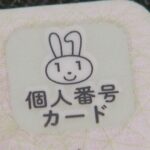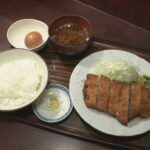“We are at the Nagoya Station Shinkansen platform. What kind of souvenirs will people choose for their homecoming? Let’s find out.”
During the Obon holiday rush, reservations for outbound Shinkansen trains peaked. At the Nagoya Station, many travelers heading home were seen carrying souvenirs. What did they choose?
(A traveler returning to Kumamoto)
“My family is in Kumamoto. I bought Akafuku as a souvenir. Everyone loves Akafuku—they’ll be happy.”
(A traveler returning to Hyogo)
“Yukari shrimp crackers.”
They chose a Nagoya classic—shrimp crackers from Sakakibara’s “Yukari” brand.
(A traveler returning to Hyogo)
“Since relatives will gather during Obon, I hope the shrimp crackers will spark conversations about Nagoya.”
(A visitor meeting friends in Osaka)
Q: What souvenir did you pick?
“Komeda’s Shironoir sweets. I thought they feel very ‘Nagoya.’ Since they’re only sold here, I hope they’ll like it.”
This year’s Obon holiday stretches up to nine consecutive days. Travelers carefully selected souvenirs with their loved ones in mind.
According to JR Central, the peak for inbound Tokaido Shinkansen reservations, as travelers return from their trips, is expected on August 17.
Nagoya Station Shinkansen platform
The Nagoya Station Shinkansen platform is a major hub for Japan’s high-speed bullet trains, connecting Tokyo, Osaka, and other key cities. Opened in 1964 as part of the Tokaido Shinkansen line, it plays a vital role in Japan’s transportation network. The station itself is located in Nagoya’s bustling city center and has undergone modernizations to accommodate growing passenger traffic.
Akafuku
Akafuku is a famous Japanese confectionery shop in Ise, Mie Prefecture, renowned for its traditional *mochi* (rice cake) dessert called *Akafuku mochi*. Established in 1707, the shop has been serving its signature sweet—a soft *mochi* covered in sweet red bean paste—for over 300 years, originally catering to pilgrims visiting the nearby Ise Grand Shrine, one of Japan’s most sacred Shinto sites. Today, Akafuku remains a beloved cultural icon, symbolizing both tradition and regional culinary heritage.
Yukari shrimp crackers
Yukari shrimp crackers are a popular Japanese snack made from dried shrimp and rice, known for their crispy texture and umami flavor. Originating in Japan, these crackers have been enjoyed for decades as a traditional snack, often paired with tea or beer. The name “Yukari” comes from a well-known brand that specializes in seafood-based snacks, reflecting Japan’s rich culinary culture of preserving and innovating with seafood.
Sakakibara’s Yukari brand
Sakakibara’s Yukari brand is a renowned Japanese manufacturer of high-quality *shamisen* (a traditional three-stringed instrument), founded in 1919 in Tokyo. The brand is celebrated for its craftsmanship, using premium materials like *koki* (red sandalwood) and cat or dog skin for the drumhead, ensuring rich, authentic sound. Yukari shamisen are prized by professional musicians and have played a role in preserving and modernizing traditional Japanese music.
Komeda’s Shironoir sweets
Komeda’s Shironoir is a popular Japanese dessert originating from Komeda’s Coffee, a well-known chain in Nagoya. It features a soft, fluffy white bun (shiro-pan) filled with sweet red bean paste (anko) and topped with a rich chocolate cream, blending traditional and modern flavors. Introduced as a signature item, it reflects the café’s post-war roots (founded in 1968) and its focus on comforting, innovative sweets.
Tokaido Shinkansen
The Tokaido Shinkansen, inaugurated in 1964 for the Tokyo Olympics, is Japan’s first high-speed rail line, connecting Tokyo and Osaka. Known as the “bullet train,” it revolutionized rail travel with speeds up to 210 km/h (now 285 km/h) and became a symbol of Japan’s post-war modernization. Today, it remains one of the world’s busiest and most efficient high-speed rail routes, carrying over 150 million passengers annually.






